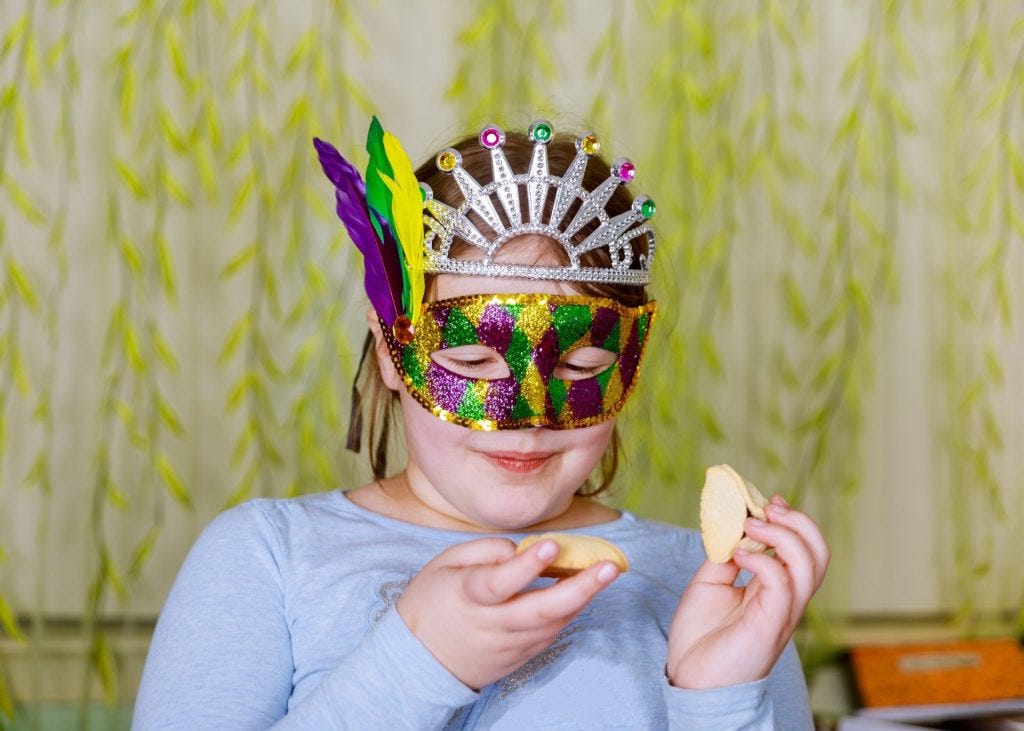Between the costumes, tasty treats, loud parties, and general merriment, Purim is a holiday bursting with sensory inputs. For kids with a variety of sensory sensitivities, celebrating Purim can therefore be an overwhelming and anxiety-provoking experience. Whether you’re planning a Purim party, attending synagogue events, or simply celebrating at home with family, these 7 tips from Gateways’ special education professionals will help you create a welcoming and comfortable Purim environment for individuals of all sensory needs. Dive in and discover how to make this Purim a truly sensory-friendly and joyful experience!
1. Preview activities that are outside of your child’s normal routine.
When an activity deviates from your routine and involves additional or unusual sensory stimuli, knowing what to expect will make your child less likely to become overwhelmed. If you’re going to a Purim event, narrate for them: What will they do when you arrive? What can they expect to see, hear, feel, touch, and taste when they get there? Will there be extra loud noises or bright lights? What are the expected behaviors for your child while they are there? What can they do if they start to feel overwhelmed or overstimulated? One great way to prepare your child for a new experience is by using a social story. Social stories depict upcoming events or routines using concrete, first-person language and images and other visual cues to allow the reader to picture themselves in a new setting or process an upcoming change. Create your own social stories with this app.
2. Plan comfortable costumes, but bring a change of clothes in case they’re not.
If your child is wearing a costume for Purim, look for simple options, such as shirt or sweatshirt costumes or onesies. Make any costume as comfortable as possible by removing tags and avoiding stiff, itchy fabrics or irritating accessories. Another option is to use clothes your child is already familiar with as a base layer, glueing and taping on top of those to create your costume. As an extra precaution, bring a change of clothes to any event in case the costume becomes too uncomfortable for your child to wear the entire time.
3. Be proactive about noise.
The lively, raucous atmosphere of Purim is one of the things that makes it so fun for many people. However, if you have a child who is sensitive to loud noises, hearing the roar of the graggers (noise-makers) during the megillah reading, the boom of the speakers during a Purim spiel, or the clamor of a Purim carnival can be very uncomfortable experiences. If you are going to temple, familiarize your child with the sound of the graggers ahead of time, practicing what happens when Haman’s name is called. You can also DIY a quieter gragger: fill a clear container or empty water bottle with pom poms, homemade confetti, glitter, bits of ribbon, feathers, and other colorful and quiet materials for your child to shake during the reading. Last, you can always bring along ear protection such as earplugs or noise-cancelling headphones for your child to wear.
4. Consider timing when attending a Purim carnival.
If you’re planning on attending a Purim carnival with a child with sensory sensitivities, try going right at the beginning or right at the end, when it’s likely to be less busy and hectic. Or, better yet, ask your synagogue to dedicate a sensory-friendly time window where there will be fewer people and noisy elements of the carnival such as background music or popcorn machines will be turned off.
5. Plan a quiet space for your child to decompress.
Quiet spaces are useful tools because they provide a calm environment that is free from overwhelming stimuli, allowing kids to regulate their sensory input. Have an alternative quiet, comfortable space set aside where your child knows ahead of time that they can go if they feel overstimulated. Inquire with your synagogue — some may have already organized a quiet space for during a megillah reading or carnival. Whether it be in a guest’s house or at temple, designating these ahead of time can help!
6. Work in positive sensory experiences.
Regardless of learning styles and abilities, we all process information and ideas better when multiple senses are engaged, and Purim is ripe with opportunity for multisensory learning. Maybe your child will like the textures and smells of baking hamantaschen with you, or the feeling of a Purim-themed sensory bin with objects like feathers, beads, and fabrics. You might engage in some movement with a calming art activity like making a mask or drawing a Purim scene. Use your knowledge of your child’s unique strengths and preferences to help them connect with Purim through the activities and feelings they already enjoy.
7. Don’t be afraid to celebrate your way!
There’s no one “right” way to celebrate Purim meaningfully! Instead of a raucous megillah reading at synagogue, maybe your child would be most successful and engaged at a smaller celebration at home with your family and a few good friends. You could have a costume parade through the house, read the Purim story, bake and eat hamantaschen, and celebrate in a way that feels comfortable and right for everyone.



